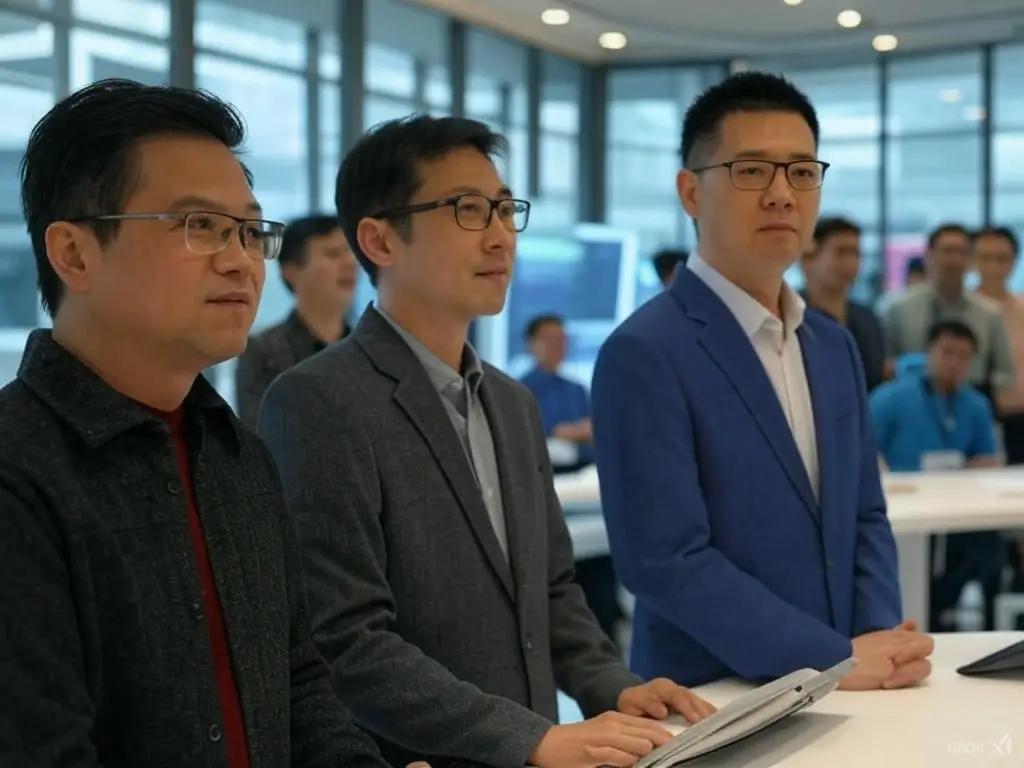Unveiling China's Latest AI Marvels: From DeepSeek to ByteDance – A Glimpse into the Futuristic Frontier

In recent developments, China has emerged as a frontrunner in the field of artificial intelligence, showcasing groundbreaking advancements that are reshaping the landscape of digital content generation. One such innovation is Omnium One, a new deepfake technology developed by ByteDance, the company behind the popular platform TikTok. This AI marvel can transform a simple image into a fully animated video that mimics natural human movement, gestures, and even singing. This article explores the implications of Omnium One, alongside existing technologies like DeepSeek, and highlights both the marvels and potential risks associated with these powerful AI capabilities.
The Mechanics of Omnium One
Omnium One is not merely an enhancement of existing deepfake tools, which often require a plethora of reference images to achieve lifelike results. Instead, this new approach enables the generation of remarkably realistic video content using just a single photo. By leveraging a massive dataset of approximately 18,700 to 19,000 hours of video, ByteDance has trained Omnium using advanced machine learning techniques. This dataset likely draws from TikTok’s extensive library, enabling the AI to learn intricate patterns of movement and speech.
The groundbreaking aspect of Omnium One is its use of what ByteDance calls "Omni conditions"—a method that incorporates multiple inputs such as text, audio, and body poses. This allows the AI to produce videos across various scenarios, be it dancing, gesturing, or performing a musical piece. Sample videos showcasing this technology are nothing short of astonishing, with animations of figures like a modernized Albert Einstein engaging in dynamic lectures or even a realistic depiction of celebrity performances, eliciting reactions of disbelief from viewers.
The Dark Side of Deepfake Technology
Despite the awe-inspiring capabilities of Omnium One, the technology inherently carries significant risks. The rapid rise of deepfake technology has already demonstrated its potential for misuse, especially in manipulating public perception through misinformation. For instance, incidents have been reported where AI-generated audio clips falsely portrayed political endorsements, leading to public controversies and confusion during election periods in countries like Taiwan and South Africa.
The consequences of these technologies extend beyond political landscapes; financial scams utilizing AI-generated content have reportedly led to losses exceeding $122 billion in 2023 alone. With estimates suggesting potential losses could reach $40 billion in the U.S. by 2027, there is an urgent need for regulatory measures to safeguard against the fraudulent practices that can emerge from such technologies.
Calls for Regulation and Public Response
As concerns regarding deepfakes continue to escalate, the demand for regulatory frameworks has intensified. Various stakeholders, including AI researchers and policymakers, have highlighted the necessity of establishing laws to mitigate the risks associated with deepfake technology. Some states in the U.S. have initiated legislative efforts to combat the deceptive potential of AI-generated imagery, emphasizing how difficult it can be to detect such content.
Surveys reveal that a significant portion of the population is aware of deepfakes, with many expressing worry about being deceived by advanced AI-generated videos. Consequently, public support for regulating this technology is growing, alongside apprehensions about its implications for trust in digital media.
The Bright Side: Innovative Applications of AI
While the dangers posed by deepfake technology are serious, there are also promising applications that could benefit society. Potential uses for Omnium One include innovative educational tools—resurrecting historical figures for lectures or creating engaging virtual teaching assistants capable of captivating students. Furthermore, creators on TikTok may leverage this technology to maintain content production effortlessly, as lifelike AI avatars could allow for creative posts without constant personal involvement.
The entertainment industry may also see transformative applications, reopening the door for deceased actors to be featured in new film projects. Although this raises ethical questions, it showcases how such advancements in AI could expand creative horizons in storytelling and media consumption.
Conclusion: Navigating the Future with Caution
As we stand on the precipice of a new era defined by AI innovations like Omnium One, the balancing act of harnessing such technology while mitigating its risks is paramount. While the capabilities exhibited by ByteDance represent a leap forward in how we produce and consume media, the challenges posed by deepfakes remain a critical concern. Regulatory frameworks must evolve in tandem to ensure that society can embrace the positive aspects of this technology without falling victim to its potential for deceit and manipulation. As we unveil these AI marvels, it's crucial to tread cautiously and responsibly into the futuristic frontier that lies ahead.
